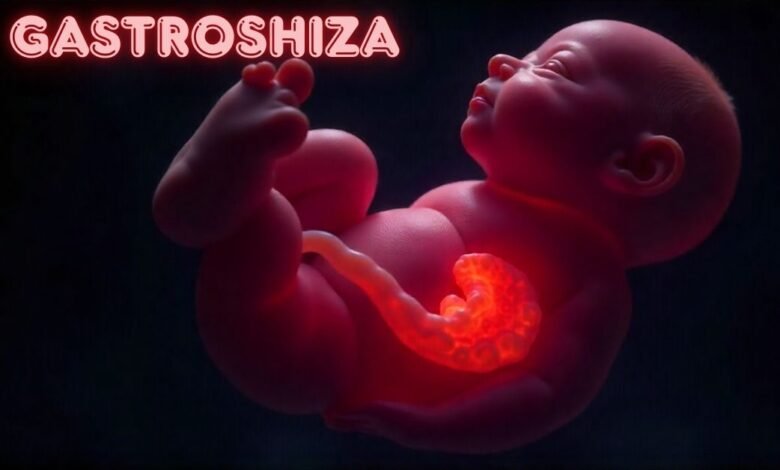Gastroshiza: Understanding the Condition and Its Impact

Gastroshiza is a rare but important medical condition that affects newborns, drawing significant attention in the fields of pediatrics and neonatal surgery. It refers to a birth defect in which a baby is born with the intestines located outside the body, protruding through a small opening in the abdominal wall.
This condition requires immediate medical care after birth and often surgical intervention to reposition the organs and close the opening. While it may sound alarming, advancements in medicine and surgical techniques have greatly improved the survival rate and quality of life for infants born with gastroshiza.
What Is Gastroshiza?
Gastroshiza is classified as a congenital abdominal wall defect that usually develops early during pregnancy. Unlike some other abdominal wall conditions, gastroshiza typically occurs to the right of the belly button and does not involve a protective sac covering the intestines.
This means that the organs are directly exposed to amniotic fluid throughout pregnancy, which can cause inflammation and irritation of the intestinal lining. Understanding the condition at its root is essential, as it provides insights into why immediate treatment is crucial once the baby is delivered.
Causes and Risk Factors
Although the exact cause of gastroshiza remains unknown, researchers have identified several potential risk factors. These may include genetic predispositions, environmental exposures during pregnancy, and maternal lifestyle factors such as smoking, young maternal age, or poor nutritional status.
However, it is important to note that many cases occur without any clear reason, which highlights the complex nature of this birth defect. Continuous research is being conducted to uncover more precise explanations, as early prevention strategies could significantly impact the prevalence of the condition worldwide.
Diagnosis During Pregnancy
Modern prenatal care has made it possible to diagnose gastroshiza before birth. Ultrasound scans are often used to identify abnormalities in fetal development, and in the case of gastroshiza, the exposed intestines are typically visible by the second trimester.
Early diagnosis allows healthcare providers to carefully monitor the pregnancy and plan for specialized delivery care, ensuring that the newborn has immediate access to neonatal surgery and critical care services. This proactive approach reduces potential complications and reassures parents about the treatment pathway.
Treatment and Surgical Procedures
The primary treatment for gastroshiza involves surgery soon after birth to place the intestines back inside the abdomen and close the opening in the abdominal wall. Depending on the severity and the size of the opening, surgeons may
choose either a single-step repair or a staged approach where the organs are gradually returned over several days using a protective pouch called a “silo.” Advances in neonatal surgery have greatly increased the success rates of these procedures, and many children go on to live healthy lives after recovering from surgery.
Challenges in Recovery
While surgical treatment is effective, recovery from gastroshiza can present challenges. Babies often require time in the neonatal intensive care unit (NICU) to stabilize and support proper digestion, as the intestines may need time to adapt after being exposed outside the body.
Feeding difficulties, slow growth, or risk of infection are some of the complications that may arise during recovery. Parents play a vital role during this stage, offering emotional support and working closely with healthcare providers to ensure their child’s best chance of a full recovery.
Long-Term Outlook for Children With Gastroshiza
The prognosis for children born with gastroshiza has improved dramatically over the past few decades. With timely surgery and proper post-operative care, most children grow up without significant long-term health issues. Some may face challenges related to digestion or intestinal function early in life, but many outgrow these difficulties with time. The long-term outlook is therefore positive, though it depends on the severity of the condition, the presence of additional complications, and the level of medical support provided during recovery.
Importance of Awareness and Support
Awareness about gastroshiza is essential, not only for expecting parents but also for communities and healthcare systems. Early detection, access to specialized care, and support for families can make a significant difference in outcomes.
Support groups and medical organizations dedicated to congenital conditions provide valuable resources for parents, helping them navigate the medical, emotional, and practical aspects of raising a child with gastroshiza. By fostering awareness, society can reduce stigma, promote understanding, and improve healthcare systems that support affected families.
Conclusion
gastroshiza is a serious yet manageable condition that highlights the importance of prenatal care, surgical innovation, and family support. Though it presents immediate challenges at birth, the combination of modern medical advancements and dedicated parental involvement ensures that most children can lead healthy,
fulfilling lives. As research continues to uncover more about its causes and prevention, the future looks promising for improving both treatment outcomes and overall awareness of this congenital condition.




